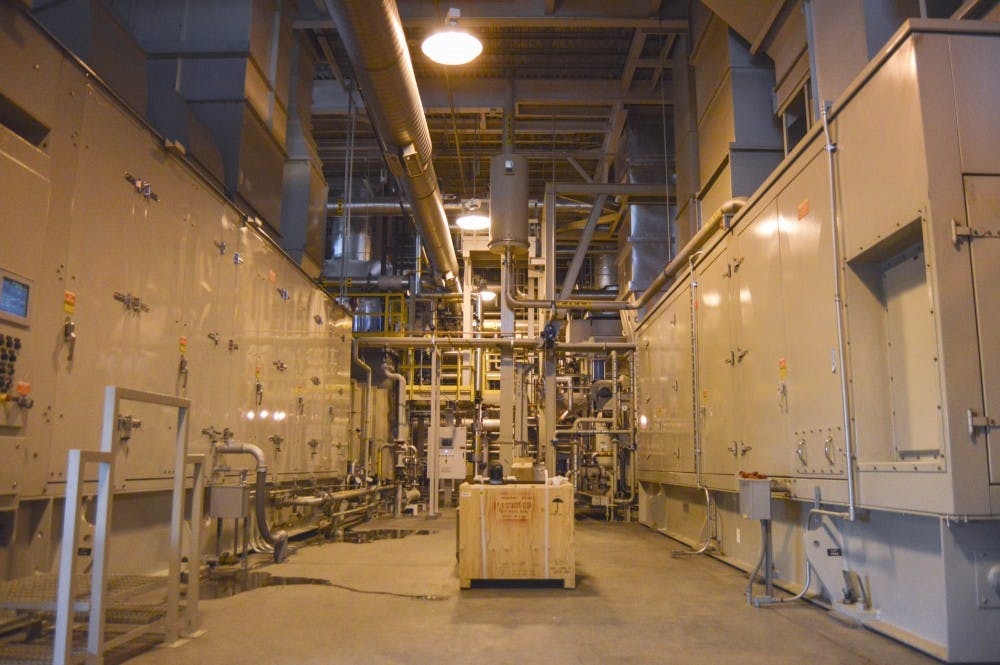The latest batch of green technologies on campus includes the cogeneration unit, located in the Ford Utility Center. The unit is a super-efficient generator that uses natural gas to power the campus, according to Larry Schuster, a utilities engineer.
Shuster, who is the project manager for the cogeneration project, said the unit is more than twice as efficient as a traditional operation, and is capable of meeting up to 90 percent of the electricity, heating and cooling demand throughout campus.
“With one fuel source, we make electricity and we make steam,” Schuster said. “We heat the buildings with it, we have processes that allow us to cool with it, but the primary benefit is that we create it all right here.”
The unit is essentially a jet engine stuck on the ground, he said. Instead of being used to create thrust, the hot gasses from the engine are used to drive an electrical generator.
However, as in any traditional combustion engine, the majority of the potential energy available dissipates in the form of heat.
The cogeneration unit is different in that it harnesses the majority of the waste heat from the engine to make steam, which is used to drive other mechanisms around campus, he said.
“The average efficiency of a traditional power plant is around 30 percent,” Schuster said. “Ours is 75 percent. This is very significant; this is power that we don’t buy.”
Mary Clark, UNM’s sustainability manager, said the cogeneration project is another step toward the University’s goal of reducing carbon emissions.
“According to our climate action plan, we’re pushing UNM to be 80 percent carbon neutral by 2030,” Clark said. “By 2050 we want to be carbon neutral.”
Jeff Zumwalt, director of utilities, said this is the third cogeneration unit at the Ford Utility Center. The first unit went operational in 1988 but has since been retired. The second was installed 2005 and the latest addition went online in January.
“In general, the cogeneration project should reduce our carbon emissions by 8000 tons of carbon dioxide equivalent,” he said. “That cuts five to six percent of the total university emissions.”
Get content from The Daily Lobo delivered to your inbox
However, Zumwalt said the new tech doesn’t come cheap. It will be eight years before the University sees a return on the investment.
The return, he said, will come from environmental benefits and savings from offsetting the energy purchased from PNM.
In total, the new cogeneration unit represents $11 million of investment into energy conservation to reduce the university’s energy needs, he said.
The project was financed through bank loans, but eventually the savings from increased energy efficiency will more than repay the debt, he said.
“We’ll save about a million to a million and a half dollars a year compared to traditional systems,” Zumwalt said.
Zumwalt said solar panels are also being installed throughout campus, with the latest additions on top of the Science, Math and Learning Center.
The parking structure on Yale, the Electrical and Computer Engineering building and several other University structures already have solar power installations.
Plans for additional solar systems are in the works for UNM West and other facilities, representing an additional $1.7 million dollars of investment into renewable energy, he said.
Tomas Lujan is a freelance writer for The Daily Lobo. He can be reached at news@dailylobo.com or on Twitter @TomasVLujan.






